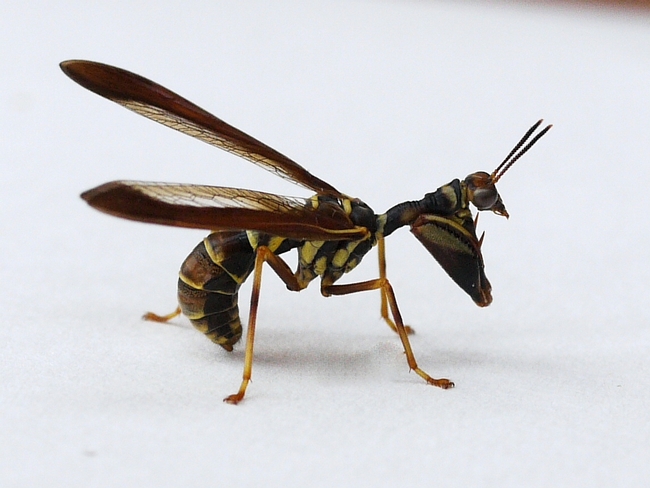
Bohart Museum of Entomology associate John De Benedictis, aka "Moth Man," brought a mantidfly, an insect that's parasitic to spiders, to the museum on Tuesday. He collected it while blacklighting at the UC Davis Stebbens Cold Canyon Reserve, Winters, a site maintained by the University of California as an ecological preserve for teaching and research.
It's a rare find. "It's the first one I've caught in 30 years," he said, recalling that the last one he collected was in the "1970s or 1980s" at Cobb Mountain Lake, Lake County, while he was enrolled at UC Berkeley.
This species, also found in the Bohart Museum collection, is Climaciella brunnea, said Wade Spencer, Bohart associate and UC Davis entomology student.
Climaciella brunnea looks somewhat like a mantis and a wasp, thus, this species is commonly called a "wasp mantidlfy." Its raptorial front legs remind us of how a praying mantis "prays." The mantidfly uses its front legs to catch small insect prey. Its coloring mimics a paper wasp.
Actually, this tiny insect is neither fly nor mantis nor wasp. It belongs to the family Mantispidae, order Neuroptera:
- Kingdom Animalia (Animals)
- Phylum Arthropoda (Arthropods)
- Subphylum Hexapoda (Hexapods)
- Class Insecta (Insects)
- Order Neuroptera (Antlions, Owlflies, Lacewings, Mantidflies and Allies)
- Suborder Hemerobiiformia (Lacewings, Mantidflies and Allies)
- Family Mantispidae (Mantidflies)
- Subfamily Mantispinae
- Genus Climaciella
- Species brunnea (Wasp Mantidfly)
"As with most mantidflies, this species is parasitic to spiders as larva: the eggs of wolf spiders are their preferred host and larva will get themselves wrapped up with the eggs in the sac by the spider, since they cannot break into the sacs themselves," according to Wikipedia. "If the spider hasn't yet laid eggs, the larva will subsist on the spider's blood until then. Once inside the sac the larva will feast on the eggs until it pupates."
According to BugGuide.net, its range includes "the southern parts of British Columbia, Alberta, Manitoba, Ontario, and Quebec (Cannings & Cannings, 2006). Widespread in the United States. South to Costa Rica."
The University of Colorado Museum of Natural History notes that "C. brunnea has a very interesting life cycle. During their 3-4 week adult life stage, inch-long females may lay as many as several thousand short-stalked eggs, grouped on the underside of plant leaves. The eggs hatch and each tiny larva waits for a passing spider. The larva then boards the spider and rides around on it until the spider lays eggs. At this time the tiny mantispid larva crawls off the spider and into the egg sac, where it feeds on the spider eggs in the security of the silken spider egg sac."
"Different species of mantispids specialize on different species of host spiders," according to the University of Colorado Museum of Natural History website. "C. brunnea larvae are known to parasitize the eggs of wolf spiders long females may lay as many as several thousand short-stalked eggs, grouped on the underside of plant leaves. The eggs hatch and each tiny larva waits for a passing spider. The larva then boards the spider and rides around on it until the spider lays eggs. At this time the tiny mantispid larva crawls off the spider and into the egg sac, where it feeds on the spider eggs in the security of the silken spider egg sac."
The adults are often nocturnal but are sometimes attracted by porch lights or blacklights.
That rang true for John De Benedictis: blacklights.
(Editor's Note: The Bohart Museum of Entomology, directed by Lynn Kimsey, professor of entomology at UC Davis, is located in Room 1124 of the Academic Surge Building on Crocker Lane, UC Davis campus. It is open to the public Monday through Thursday, and on specially announced weekends. The next open house, free and open to the public, is Saturday, Sept. 22 from 1 to 4 p.m. The theme is "Crafty Insects." Visitors are invited to bring their insect crafts that they have made. They will be displayed next to "crafty"--sneaky--insects.)
Attached Images:
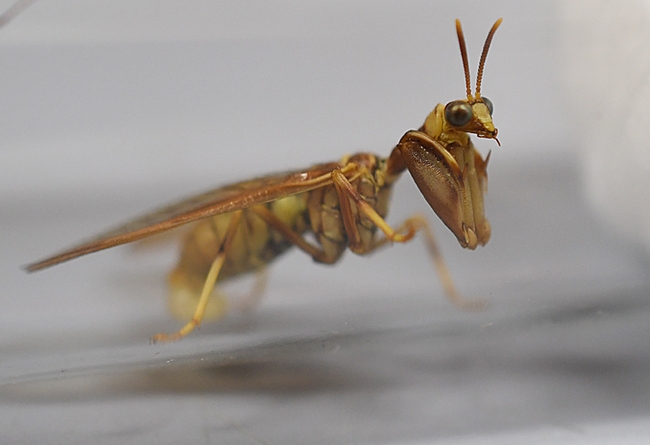
Mantidflies use their front legs to catch small insect prey. This one was collected by John De Benedictis at the UC Davis Stebbens Cold Canyon Reserve. (Snapshot by Kathy Keatley Garvey)
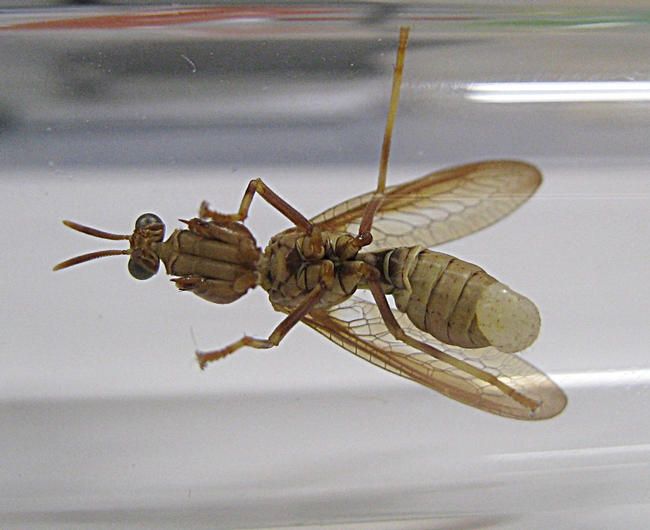
In coloring, the mantidfly abdomen resembles a paper wasp. (Photo by Kathy Keatley Garvey)
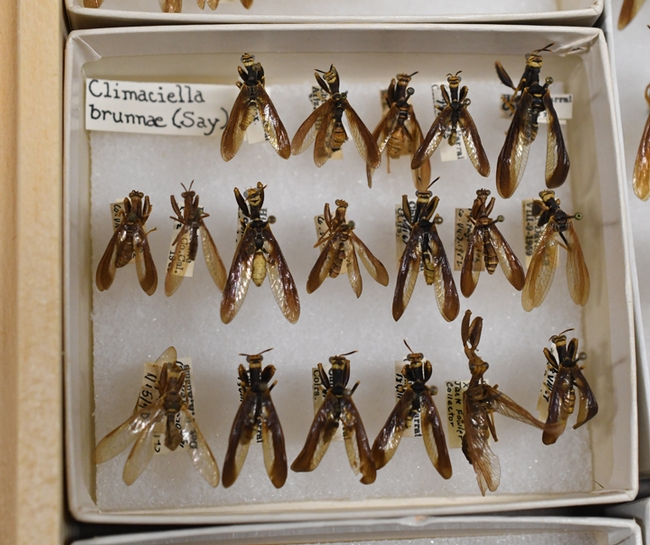
Part of the collection of mantidflies, Climaciella brunnea, at the Bohart Museum of Entomology. (Photo by Kathy Keatley Garvey)
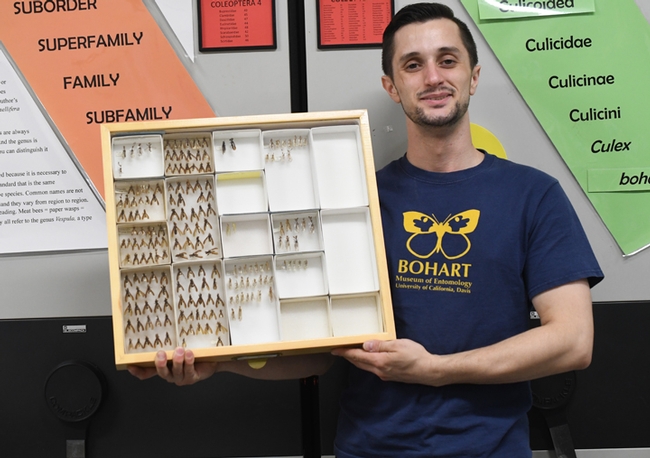
Bohart Museum of Entomology associate Wade Spencer holds a drawer of mantidfly specimens. The museum houses some eight million specimens, collected globally. (Photo by Kathy Keatley Garvey)